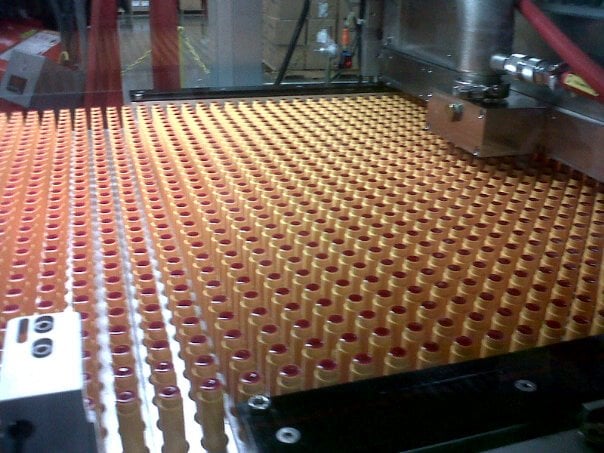As those of you who read my blog regularly will recall, at the last SPC member’s only meeting the idea of “collective reporting” was proposed to the membership; this entails the collection and reporting of environmental performance indicators, like water consumption and/or landfilled material, per membership company. Basically, a company-specific “LCA” that demonstrates the firms’ environmental inputs and outputs, akin to, though perhaps not as detailed as, the international standards for LCA, ISO 14040-14043. Some multi-national, publically-traded firms already collect and report environmental performance data via Corporate Sustainability Reports; this communicates to stakeholders the company’s environmental commitment and actualization of said commitment via sustainability initiatives.
The SPC intended that in encouraging this type of data collection, the value of SPC membership would be more concretely communicated to non-member entities. Such efforts would demonstrate the packaging industry’s commitment to sustainability, insofar as to my knowledge, no other cross-industry NGO working group like the SPC has been able to generate such environmental data collection and reporting among its membership. Moreover, in aggregating primary, LCIA data per industry vertical i.e. thermoforming, the membership would be in a position to submit said data for review to the available life cycle inventory databases, to which, all LCA-based software platforms derive data for comparative assessments. Because the lack of accurate data/data holes/outdated data is often sited as one of LCA’s shortcomings when it comes to presenting an accurate snapshot of a product or service’s environmental footprint, being in a position to provide new and verifiable LCIA data would put the membership in a position of value for the sustainability and LCA community.
After introducing this proposal to the membership, the SPC staff were met with a resounding NO. This may be in part to the composition of the membership itself, which includes a lot of small and medium sized firms and manufacturers that don’t have the means to collect the data requested. Moreover, while transparent CSR reports may benefit large, publically-traded firms insofar as it aids in communicating shareholder value, the same may not hold for privately-held companies; here, reporting consumption and emissions metrics may provide too much insight into the business’s internal operations.
So the suggestion pretty much died there.
Then, while attending Sustainability in Packaging I had the privilege of seeing Dr. Karli Verghese’s presentation on the available LCA tools and how different tools are designed for different functions (click here to download my report based on presentation findings): while blank-slate LCA tools like SimaPro can be used to answer any type of environmental performance question for any type of product or service, tools like LCA-based comparative packaging assessment COMPASS have already been designed with certain methodologies, parameters, and assumptions built in, thereby allowing the non-LCA expert practitioner access to this powerful environmental assessment.
This got me thinking— Dordan already uses COMPASS to assess the “sustainability” of its package designs; this tool pulls industry averages for materials manufacture i.e. PVC vs. PET, conversion i.e. thermoforming with calendaring vs. paper cutting, distribution, and end of life. COMPASS is helpful for indicating how different materials/designs/conversion processes inform a package’s environmental profile. That’s cool in all, but what about the “sustainability” of a Dordan thermoformed package vs. a competitors’ package? Because most LCA-based tools use industry averages, which are outdated and don’t reflect the implementation of lean manufacturing processes, how is Dordan supposed to understand it’s company’s “carbon footprint” in opposition to that of its competitors or the industry or other conversion industries for that matter?
I approached the SPC with this inquiry; that is, what tools and resources is the SPC willing to provide to its member companies looking to perform an environmental assessment of its process, as encouraged at the last meeting? Moreover, would the SPC be interested in developing a streamlined LCA tool like COMPASS for packaging converters looking to perform a company-specific LCA?
The SPC staff suggested I propose this idea to the membership to see if other companies were interested in this type of initiative; perhaps if other thermoformers were interested in this type of environmental assessment, we could collaborate on developing a methodology for performing a conversion-specific LCA?
The SPC staff articulated that the organization is not in a place to provide LCA consulting to its membership, and when it encouraged collective reporting, it was implying said data maintenance be performed independent of the SPC, via consultants or LCA practitioners.
A friend of mine recently conducted an LCA of his company’s innovative new packaging material, for which, no LCIA data existed; hence, no claims of environmental impact could be postulated. He used the SimaPro software and created all study parameters and methodologies. That inspired me: Just because LCIA data exists for packaging conversion via thermoforming doesn’t mean it reflects Dordan’s thermoforming environmental profile; we shouldn’t be complacent with the status quo; and, we shouldn’t talk the talk of sustainability without walking the walk. Ya dig?
I am reading The Hitch Hiker’s Guide to LCA and WOWZA is this stuff awesomely complicated; I feel like I am finally starting to understand the great debates of LCA and its application to business.
Stay tuned!




